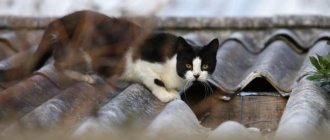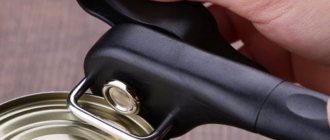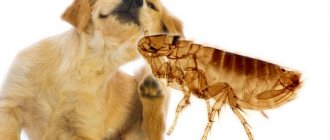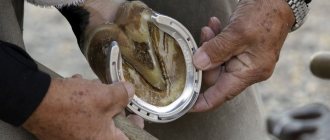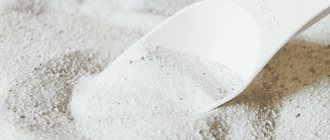It is customary to remember about odors that dogs cannot tolerate when the pet commits another misdeed, which the owner cannot influence in any way. Whether it’s dug up flower beds in a country house or a marked corner in an apartment, powerlessness prompts you to look for workarounds to influence the animal. Despite the fact that the olfactory system of dogs is much coarser than that of a cat, it is still superior to humans by many times. Dog noses also cannot tolerate certain categories of odors that do not cause much discomfort to humans. We’ll talk further about what smells dogs don’t like and how to use them without harming the animal’s health.
What smells do dogs not like?
No. 1. Hot peppers
Hot peppers such as jalapeno peppers, chili peppers, and poblano peppers are natural dog repellents. They are effective for one simple reason: they are spices.
The tingling sensation in the tongue and nose is completely foreign to dogs and is not something they like. As a result, they move as far away from the place where they found the pepper as possible.
In many cases, simply sprinkling ground pepper on the area where the dog is pooping is enough to repel the dog.
While we can't always smell a spice right away, the strength of your pup's olfactory senses ensures that they will sense it.
The spiciness of peppers comes from chemical compounds called capsaicinoids. You can easily create a repellent spray by crushing pepper and mixing it with a little water.
It is important to be careful when doing this.
Dogs are very sensitive to spices and may sneeze. In severe cases, they may even suffer from respiratory problems.
Never feed your dog hot peppers or spray their fur with them.
Instead, you can use a spray to keep your puppy away from plants and certain parts of the yard that are toxic to dogs.
If your dog is particularly sensitive, you can create a pepper spray that has no seeds or white veins.
Interesting on the topic: Can dogs eat sweet bell peppers?
You can also use ready-made preparations with a smell that dogs do not like:
Beaphar Stop it Dog spray for repelling dogs
Thuja is the most popular conifer.
Among the various exotic coniferous trees, thuja occidentalis occupies a strong dominant position. This is the most popular plant among visitors to nurseries and garden centers; rare landscape projects today can be done without the use of thuja. Plantings of this tree and shrub plant are found in parks, squares, and summer cottages in both big cities and small towns. Thuja has become a characteristic element of the Belarusian landscape. And it came to Europe from North America, where it naturally grows in the eastern part of the continent.
Thuja forms vary in height, size and crown shape, and have different growth rates. There are columnar, pyramidal, spherical, cushion-shaped, heather-shaped crown shapes. The color of the needles is also varied - from emerald green to golden and whitish.
The most popular among landscapers and amateur gardeners is the compact cone-shaped thuja Brabant with densely growing branches. It is distinguished by its rapid growth, has a height of 15-20 m and a crown diameter of 6 m. Thuja Smaragd has similar properties. The plant received its name for the emerald color of the needles and a very narrow cone-shaped shape with densely spaced branches. The plant reaches a height of 5-7m and looks especially good in single plantings and small groups. Thuja occidentalis Columna has a columnar shape. In terms of habit, this thuja resembles a cypress, growing up to 8 m in height and 1.5 m in width. All three of these species can be successfully used in creating a hedge (in some cases, the effect of a hedge is achieved without pruning).
Other cone-shaped forms of western thuja are also known: Europe Gold - a slow-growing form 4 m high, with golden-yellow needles; Holmstrup - dwarf thuja with green needles, 3-4 m in height; Sunkist - narrow cone-shaped, very dense and compressed, with golden-yellow needles, up to 4-5 m high; thuja with golden needles Ellwangeriana Aurea.
Pyramidal and columnar thujas serve as decoration for regular and landscape compositions in parks and squares, giving objects solemnity and pomp. These forms are used in alley plantings, on boulevards and when creating hedges and bosquets. When choosing a planting site for tall trees, keep in mind that trees planted near buildings will quickly grow, darken the windows, and the roots will damage the foundation and blind area.
Low-growing (dwarf) forms of thuja with various shades of needles, along with other types of conifers, will serve as decoration for rocky gardens, rock gardens and alpine slides. The spherical thuja western Danica with green needles reaches 0.6-1 m in height in 20 years; Thuja occidentalis Recurva nana is a dwarf plant with a cone-shaped shape, grows up to 2 m; Reingold form - a flat-growing, semicircular plant with golden-yellow branches; Tiny Tim form - a slowly growing bush up to 0.5-1 m high with branches twisted in the form of shells. The spherical thuja Globosa with a diameter of 1.5 m is also widely known.
Group plantings, where different forms of thuja are used, are highly decorative. The combination with flowering trees and shrubs, as well as plants with original foliage colors, creates a colorful picture throughout the year. When creating landscape groups, the biological characteristics of each plant should be taken into account. The tallest plants are planted in the center or in the background, and the shortest plants are planted in front or on the sides, as their size decreases.
Globular and bush-shaped thujas are good in single and group plantings. Without cutting, they retain their shape throughout their lives. But over time, the bush “falls apart” into individual stems and loses its decorative effect. Such thujas are not suitable for hedges, but they look good in linear plantings along paths and on ridges.
Often, wanting to immediately get a spectacular picture, gardeners try to plant coniferous plants close to each other, without taking into account their growth rate, crown size and shade tolerance. By saturating group plantings with a large number of different species and forms, we create a motley picture in which it is impossible to appreciate the beauty of each plant. It is desirable that the number of trees and shrubs in a group does not exceed 5-7 pieces.
When planted very densely, the needles and branches, not receiving enough light, quickly die, the stem is exposed, and the decorative effect is lost, which is not restored even over time.
No. 2. Ground spices
Your dog's reaction to ground spices is very similar to how your dog reacts to hot peppers.
Ground chili powder, cayenne pepper, ground mustard and more are great for keeping your dog away from areas you want to keep away from canine mischief.
Many ground pepper spices are used in commercial dog repellents due to their effectiveness. If you want to try the spices, you can simply sprinkle them on part of your yard.
Again, never blow it in your dog's face. Fine particles can easily get into your dog's nose and cause burning and irritation.
No. 3. Citrus
Citrus scents can be found in a wide variety of household products. It is used in cleaning products, room deodorizers, candles and more.
This scent is pleasant to us, but dogs absolutely despise it.
The problem with citrus fruits is that the oils in the skin can irritate your pup's respiratory tract.
Citrus oils are commonly used in products designed to prevent dogs from urinating in certain areas.
Instead of shelling out a lot of money, you can easily make the product yourself.
All it requires is the peel of oranges, lemons, limes or grapefruits. Simply place the skins on the ground and your dog will avoid the area.
You can also use fruit juice to create a spray.
If you want something more powerful, citrus essential oils are also available. They are very concentrated, so you can dilute the oils with a little water before spraying them around your home or yard.
Beaphar Stop it Dog spray for repelling dogs
No. 4. Fresh herbs
Many dogs don't like fresh herbs like mint or rosemary. They have a very pungent aroma that dogs don't like. You can use this fact to your advantage and plan for fresh herbs in your garden.
You can also create a simple spray solution by soaking the grass in water to extract the oils.
Although most dogs cannot tolerate the smell of grass, some will have no problem with mint.
In fact, there are many mint-flavored treats that can help combat bad breath. Before you start purchasing mint products, see how your dog reacts to the smell and taste.
How to get rid of unwanted pets
A dog-repellent scent can be used against uninvited guests who wander onto your property, lawn or flowerbed. You need to know how to discourage dogs so that they don’t come back, but also not harm them. It is better to use natural repellents - lavender, vinegar, garlic, alcohol. You can turn on the ultrasonic repeller once. If dogs are aggressive, it is better to spray an aerosol.
Dog repellers have an unpleasant odor
A dog's sense of smell is famous for its keenness. The dog is able to distinguish all kinds of aromas. Unpleasant odors irritate the animal and cause it stress, so such “stinkers” should be used only as a last resort.
No. 5. Vinegar
Vinegar is a very versatile ingredient that is used in many home remedies. There are several different types of vinegar available on the market.
Some, like standard white vinegar, can be used to keep your dog and his urine away from furniture, corners, and your yard.
It is safe, non-toxic and relatively affordable. Just pour it into a spray bottle and get to work.
The downside of vinegar is that it really doesn't smell very good to us humans either. It is sour and very sharp. Although it reminds many of the smell of marinated kebab.
Beaphar Stop it Dog spray for repelling dogs
Water repellent
A trickle of water that suddenly arrives from somewhere will undoubtedly scare the dog away. Investments in this case are small: a sprinkler is available in all dacha farms, all that remains is to equip it with a motion sensor.
But this method also has its drawbacks. Among them is a reaction to any moving object larger than a mouse (child, cat, squirrel). Consequently, water consumption will seriously affect the budget.
In addition, such frequent “watering” can lead to waterlogging of the area and the death of plants on it. So the technique is only suitable in the initial stages, when the dog is just sniffing your territory.
No. 6. Mothballs
These tiny white beads have a very distinct smell that you will immediately recognize if you have used them at some point in your life. They are designed to prevent moths from eating your clothes.
Mothballs act as a pesticide and deodorizer to control mold odors. Due to their chemical composition, moth balls are very dangerous for both dogs and humans.
If you plan to use mothballs to keep your dog out of the room, make sure the mothballs are securely attached. If your dog eats even one mothball, he will be at immediate risk of death.
To prevent problems from occurring, you can store mothballs out of reach or use a specially designed holder. As long as the strong smell of mothballs permeates the room, it will do its job.
No. 7. Alcohol
Standard rubbing alcohol has an unpleasant odor to dogs. You can spray alcohol onto cotton balls and place them on the area where your dog is acting up.
The effectiveness of alcohol will depend entirely on its concentration. The higher the alcohol percentage, the stronger the smell.
As with any chemical, it is important to keep your dog safe. Never spray it on your dog. Many veterinarians do not even recommend rubbing alcohol on a dog's skin after an injury, so it is important to avoid any contact with the dog.
In addition, alcohol is highly flammable. Keep this in mind when placing alcohol-soaked cotton balls around your home.
Beaphar Stop it Dog spray for repelling dogs
No. 8. Household cleaning products
Has your dog ever left the room when you started cleaning your kitchen countertops or floors? It's not because they are so polite and appreciate your cleaning work.
This is because they absolutely hate the ingredients in regular household cleaning products.
Many products use chlorine or ammonia. Additionally, some have added citrus scents, making the smell worse for your pup.
Never use cleaning products as a direct repellent on your dog, especially if they contain strong chemicals such as ammonia.
Inhaling ammonia can cause burns and irritation to your dog's throat.
It is always recommended to keep your dog outside when you are cleaning an area they frequent. While it would be dangerous to use household cleaners to repel your puppy, you can simply keep the room clean.
For example, many owners don't want their dog to come into their bathroom. So they just clean it regularly. Once the strong fumes have subsided, your dog will not be in danger.
However, this small amount of odor will be enough to make them reluctant to enter the room.
Other repellents
In addition to exposure to odors, there are other methods of repelling dogs. In addition to the sense of smell, you can also influence the animal’s hearing through ultrasound, or even taste buds, which are very sensitive to unpleasant tastes.
For ultrasound to be effective, its frequency must be at least 21 kHz
Since the need to get rid of the dog’s annoying attention arises in different circumstances, the methods of dealing with animals should be different. We will talk further about alternative ways to scare off a dog and prohibit it from certain actions.
Table 1. Dog repellents
| Grannick's Bitter Apple Spray | The composition of the spray is completely safe for dogs even if ingested. Bitters, water and twenty percent isopropyl alcohol make the spray effective in combating dogs' excessive attention to forbidden objects. To use this substance, just apply it to an object. Non-aggressive components allow the composition to be applied not only to shoes, but also to other more delicate surfaces. Some owners even apply it to their hands if necessary. Disadvantages include quick odor dissipation and ineffectiveness when used outdoors. |
| HALT Dog Repellent Spray | This drug is suitable primarily for cyclists who are tired of the intrusive attention of dogs. The main component of the spray is capsaicin, which is extracted from peppers and has a sharp effect on the dog’s sense of smell. Since the composition is used in emergency situations, it must be directed directly at the four-legged pest to cause a quick reaction. When particles of the substance enter the dog’s nasal mucosa or oral cavity, the effect is achieved immediately. When spraying a substance, care must be taken to ensure that the person himself does not come into contact with the released stream. |
| The Company of Animals Pet Corrector | This product is not widely used in household conditions, since its influence extends to the dog’s hearing. When you press the cap, a compressed gas is released from the cylinder, which in itself is completely neutral. The effect is exerted by the sound itself with which the gas is emitted. Remotely, this sound resembles the hiss of a goose or snake before an attack and informs the dog that danger is nearby. Most often, this drug is used when training a grumpy pet to discipline it. This method of control is not very effective against wild or aggressive dogs. |
| Hoont Electronic Ultrasonic Handheld Dog Repellent | This device works using ultrasound, which is unrecognizable to humans, but has a negative effect on dogs. The product helps to instantly distract the dog from an unwanted action, but does not consolidate the result, since the dog does not associate ultrasound with a specific offense. Therefore, the device is more suitable for attracting individual attention. The device is completely safe and operates at a distance of up to 15 meters. Individual reactions to ultrasound should be taken into account - not all animals are sensitive to it. Some buyers noted the uselessness of the device, while others were satisfied with it |
| Havahart Critter Ridder 3146 Animal Repellent | The repellent is intended for treating soil that the owner plans to protect from attacks by pets or stray animals. The mixture contains natural ingredients: pepper and capsaicin. The product is great not only for fighting dogs, but also cats, squirrels and other animals. Its advantage over ordinary ground pepper is its durability - the particles of the mixture continue to affect the pet’s sense of smell even after rain and do not require renewal for a whole month. However, plot owners have repeatedly noted the dubious effectiveness of the repellent and the frequent ignoring of it by pets when mastering the beds |
| Orbit 62100 Yard Enforcer Motion Activated Sprinkler | The device is an automatic sprinkler with a built-in sensor that responds to the approach of animals. The device is equipped with night and day modes, allowing you to protect the area from encroachment around the clock. By taking into account the consumed liquid and battery, the sprinkler prevents the consumption of unnecessary resources and operates in an economical mode. According to reviews from site owners, this miracle of technology is the most effective in the fight against uninvited guests. |
If desired, you can combine several repellers to achieve the optimal effect depending on their scope of application. Thus, repellents scattered over the beds turn out to be completely useless when meeting stray dogs on the street, which ultrasound will help scare off, and vice versa. Below we will tell you how to choose an ultrasonic repeller so that the device turns out to be the most effective.
Choosing an ultrasonic repeller
No. 9. Perfume or cologne
Perfume and cologne contain a number of ingredients that dogs will avoid. Puppies often ignore their owner the moment a scent is applied to their skin.
This is because perfume products contain chemical compounds, essential oils and alcohol.
All of these ingredients have a strong odor that dogs hate. Not only that, but the scents mask your body's natural odor.
Dogs primarily identify you by your unique scent. Even if you don't feel like you smell much, you have a scent that identifies you.
This smell calms your dog. When you cover it up with strong perfume, your dog won't like it. Although perfumes and colognes are smells that dogs hate, you should never use them as a repellent, no matter how effective they are.
Beaphar Stop it Dog spray for repelling dogs
Plants
Mice cannot tolerate the smell of certain plants, which are called natural repellents.
Sagebrush
The leaves and stems of wormwood contain an essential substance called thujone, which gives it a specific pungent, bitterish odor. The aroma of this herb repels rodents. Bundles of dry or fresh plants can be placed in residential and commercial premises. You can smoke pests out of holes by burning bunches of grass in front of the entrances.
Sagebrush
Tansy
A herbaceous plant with umbels of yellow flowers is widespread throughout Russia. The flowers have a sharp, slightly sweetish, spicy scent that repels mice. Fresh plants in bunches are laid out in sheds and cellars.
Tansy
Elder
The shoots and flowers of the bush contain tannins and hydrocyanic acid - substances with a pungent odor, poisonous to mammals. Shrubs can be planted around fruit trees; for the winter, elderberry branches are tied to the tree trunk.
Elder
Blackroot
The plant has long been used in rural areas to repel and bait rodents. A few branches in the center of a haystack will prevent mice from building a nest in it. The juice and decoction of the plant are used as poison in rat bait.
The herbaceous plant can be planted on the site next to outbuildings and fruit trees. Dry rhizomes, stems, and seeds can be laid out indoors, in the trunk of a car.
Blackroot
Ledum
The name of this evergreen shrub, common in temperate and northern latitudes, comes from the old Russian word “to poison, to suffocate.” All parts of the plant are poisonous.
The smell can cause headaches in humans; it should be used with caution. To repel mice, fresh leaves and branches are laid out indoors
Ledum
Mint
All representatives of the Lamiaceae family, that is, varieties of mint and lemon balm, contain organic substances with a pungent odor - menthol, various acids. Mice avoid areas planted with mint.
Mice in the apartment will be repelled by plants planted in pots. For these purposes, you can also lay out bunches of dried plants.
Mint
Chamomile
The medicinal plant is widespread and is considered a weed by gardeners. To repel mice, you can scatter dried crushed or whole flowers near their habitats and place them directly in holes and passages.
Chamomile
No. 10. Cosmetic products
Nail polish, hairspray, and other cosmetic products contain chemicals. Think about how familiar these foods smell.
Most adults can easily identify these foods without even looking at them, especially if they are familiar with them. If the smell is strong for you, it will be almost unbearable for your puppy.
Never use cosmetics as a deterrent. If you plan to use them on yourself, keep your dog in a well-ventilated area that will not be exposed to the fumes.
Additionally, you can buy natural beauty products or those that do not contain harsh chemicals.
Why do you need a dog repeller?
Fear is a basic emotion for survival. By acting on it, you can scare away the animal for a long time. Then the dog will stop attacking aggressively, shitting in unnecessary places, damaging property and destroying landscaping.
You can influence the animal's vision, hearing, smell or taste. Depending on this, repellent devices are divided into the following types:
Some odors common to humans are unpleasant to dogs.
Gas cartridges
Filled with a special mixture. When sprayed near an animal, they affect vision and smell.
Ultrasound
Affects the animal's hearing, is safe for people. There are portable and stationary repellers. You can carry mechanical (whistle) and electronic devices with you.
For your information! Stationary ones contain a motion sensor and turn on when a dog appears in the coverage area.
Portable ultrasonic repellers are compact and easy to use
Stun gun
They scare away animals using an electric discharge: sharp bright flashes of light, loud crackling, impact on pain centers.
Biological
They affect the dog’s sense of smell and have a pungent odor.
Conclusion
Dogs are very sensitive creatures and can be affected by smells you can't even smell. Every dog is different, so your puppy's reaction may be different from another's.
Over time, you will learn what your dog likes and doesn't like.
When you discover something that your puppy hates, you can use it to keep him away from a certain place.
You can also use this information to help keep your dog comfortable and safe in your home.
What means do you use to stop your dog from crapping anywhere and chewing on useful objects?
Please write in the comments!
How to stop a dog from crapping using repellent odors
Nowadays, many veterinary pharmacies and pet stores have a large assortment of special medications that can be used as an aid to stop a dog from shitting in the wrong place, for example, on the carpet. These products are quite effective, you just need to spray all the places where your pet is addicted to doing this.
The smell will scare the dog away the next time it is about to do an unacceptable act. These products are successfully used not only in apartments, but also in summer cottages; they help preserve garden beds and lawns.
Very often young dogs on a walk do not understand where they can go to relieve themselves and where not. Unfortunately, the animal is not aware of the presence of beds, lawns, and front gardens. The best solution would be to spread repellent odors in areas where the pet is not allowed to walk. However, many chemicals quickly evaporate or completely pollute the soil. Therefore, the site mschistota.ru recommends preparing such a remedy yourself from available ingredients, especially since there is nothing simpler. It can be created using alcohol, vinegar, shag, citrus fruits, or even hot pepper—there are still many household smells that repel dogs.
Alcohol
The smell of rubbing alcohol lingers for a long time, and dogs cannot stand it. Therefore, if she smells a similar aroma, she will try to avoid these places for a long time. Place swabs soaked in alcohol around the garden. In an apartment, it is enough to wipe the floor with water with the addition of a small amount of alcohol.
Hot peppers
Hot pepper is also able to protect the garden from pet attacks. A decoction of hot pepper irritates the mucous membranes, so dogs will avoid contact with this product. Spray the leaves of plants, beds with it, or, for example, wash the entrance with it if the animal has taken a fancy to it.
Vinegar
Vinegar essence is also an excellent repellent for dogs. Dampen rags with this solution and place them in “hot” areas. The effect will not be long in coming - the dog is unlikely to want to be there, much less pee.
Citrus
The smell of citrus fruits is more suitable for indoors, as it disappears faster, and it would be irrational to spread the remains of oranges and lemons all over the area. You will have to lubricate the surfaces with citrus juice every day, but in the end, the dog will remember where the source of the repellent odor is and will understand what they want from it.
Baking soda
Sprinkle baking soda over the entire surface of the lawn. You can also use a soda solution and pour it over the area where the dog managed to mark the territory. It is unlikely that she will return there with bad intentions. In addition, baking soda protects plants from other diseases or insects. It neutralizes the smell of urine and scares away other dogs.
